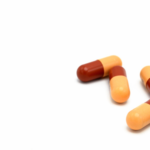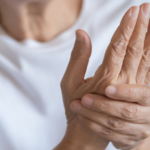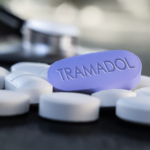
July is commemorated as Juvenile Arthritis month. Yes, young children and adolescents can get affected by this debilitating disease as well! It is a myth that only older people suffer from this ailment. Let’s substantiate this with a rather distressing fact: nearly 3,00,000 children in the US alone have been diagnosed with some form of juvenile arthritis. The underlying purpose of commemorating this month is to increase awareness about this disease and to promote the need to find a cure for it. (1)

More about the disease
Like arthritis, juvenile arthritis causes inflammation in the joints in children and results in pain, swelling and stiffness. It can affect children of all age groups. It is different from what older people suffer from: juvenile arthritis implies auto-immune forms of the disease. In other words, the immune systems of the youngsters attacks their joints to cause swelling, stiffness, and sometimes, even permanent damage. It leads to irregularities concerning bone development and growth. If left untreated, it can lead to loss of mobility, blindness and even death in the worst-affected cases. (1)
Crippling day-to-day activities
This chronic disease often takes a serious physical and emotional toll on children, leading to incapacitating pain accompanied by feelings of loneliness and depression. This sense of feeling low is quite natural since the disease restricts the youngsters from participating in nearly all aspects of their life, be it their daily movements, playing, spending time with family or friends and even sitting for studying. (2)

Causes
While it is certain that the condition is not hereditary, the cause of this disease is not entirely known. There are certain theories that researchers have attributed it to. While some believe that affected children might have some genes that make them susceptible to it, others speculate that it is caused by exposure to some factors in the environment, for example, a virus. (3)
Types of juvenile arthritis
The three main types of this arthritis are: (3)
- Otigoarticular: This term implies “few joints” and accounts for 50% of juvenile arthritis cases. Girls younger than eight years are more prone to this disease. In half the cases, only one joint is involved, usually a knee or ankle. The condition is therefore also called mono-articular juvenile arthritis. In most cases, the symptoms are very mild and, over time, may lessen or disappear altogether. However, for some children, the disease affects four or fewer larger joints, including the knee, ankle or wrist. This illness can even disturb the vision in the eyes, in which case the child will need regular eye examinations to monitor the situation.
- Polyarticular: Most doctors believe that this type of arthritis is the equivalent of adult rheumatoid arthritis. About 30% of children are affected by this type of the disease, and it is again more common in girls than in boys. This condition affects five or more smaller joints, such as the hands and feet. Usually, the affected joints are on both sides of the body. Large joints also stand the chance of getting affected.
- Systemic: Affecting 20% of children, the characteristic of this type entails swelling, pain and restricted motion in at least one joint. Additionally, the child may suffer from inflammation of internal organs such as the heart, liver, spleen and lymph nodes. A fever of at least 102 degrees every day for two weeks or longer confirms this form of the ailment. If not adequately treated, children who have systemic arthritis may develop symptoms in many joints, and the disease can continue into adulthood.

Treatment
The treatment for juvenile arthritis is essentially designed to reduce the pain and maintain the mobility of the affected joints. (4)
Medication: The most commonly-used medications include non-steroidal anti-inflammatory drugs (NSAIDs), disease-modifying anti-rheumatic drugs (DMARDs) and other biologic agents that are often used in conjunction with the DMARDs to reduce inflammation and prevent joint damage. In certain conditions, corticosteroids are administered to control symptoms till another medication takes effect. This non-surgical method through medication is, in fact, the most common mode of treatment for this illness.
Therapies: A physical therapist is often recommended to help the child maintain the flexibility of joints. The young patients are advised exercises to support mobility of the joints along with proper muscle tone. Protective equipment is also recommended as part of the therapy.
Surgery: Extremely severe cases require surgery, especially when a joint has become deformed.
We care for you
With manufacturing and distribution services across the globe, Shubham Pharmachem Pvt. Ltd. is always in perfect harmony with such global movements in healthcare. This top Indian brand is vertically integrated with the pharmaceutical industry to provide the best service to its clients. The organization’s wide array of top-of-the-line products includes Active Pharmaceutical Ingredients (API), herbal extracts, nutraceutical ingredients as well as cosmetic ingredients.
A leading contributor in the pharmaceutical industry for almost three decades now, constant diversification and dynamic expansion of business activities has resulted in the turnover of the Group to rise northwards by 400% in a short span of 10 years.
For more information, visit www.shubham.co.in
Disclaimer:
Shubham Pharmachem’s blog posts have been written with the information gathered from approved medical journals and websites online. Our research and technical team strive to provide relevant information through such articles. We strongly advise readers to not consume or administer any medication without prior consultation with their doctor.
References:
- Johari [online]
Available at:https://www.joharidigital.com/juvenile-arthritis-awareness-month-2020/ - Arthritis Foundation[online]
Available at:http://blog.arthritis.org/juvenile-arthritis/tag/juvenile-arthritis-awareness-month/ - OrthoInfo [online]
Available at:https://orthoinfo.aaos.org/en/diseases–conditions/juvenile-arthritis - Mayo Clinic [online]
Available at:https://www.mayoclinic.org/diseases-conditions/juvenile-idiopathic-arthritis/diagnosis-treatment/drc-20374088




